Name Jean-Pierre Petit | Role Scientist | |
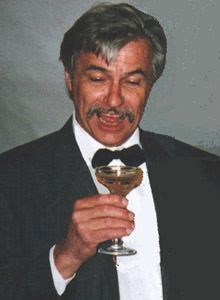 | ||
Books Le mystère des Ummites, Le géométricon, L' informagique | ||
Jean pierre petit l arm e
Jean-Pierre Petit (born 5 April 1937, Choisy-le-Roi) is a French scientist, senior researcher at National Center for Scientific Research (CNRS) as an astrophysicist in Marseille Observatory, now retired. His main working fields are fluid mechanics, kinetic theory of gases, plasma physics applied in magnetohydrodynamics power generation and propulsion as well as topology and astrophysics applied in cosmology. He is a pioneer in magnetohydrodynamics and has worked out the principle and techniques of parietal MHD converter. In cosmology, he works on the Janus cosmological model, a bimetric theory of gravity published through peer review, presented in international conferences, and popularized through science comics, as well as course videos.
Contents
- Jean pierre petit l arm e
- Jean pierre petit about the secret american mhd technology
- Professional work
- Professional work overview in MHD
- Plasma physics and magnetohydrodynamics MHD
- MHD Power generation
- Coanda effect and air breathing MHD accelerators
- MHD flow control and supersonic flight without shock wave
- New research
- Galactic dynamics and Newtonian cosmology
- Variable constants cosmology
- Janus cosmological model
- Topology
- Egyptology
- Popular science
- Claims and public matter of controversies
- Ummo case and ufology
- American secret weapons
- Aneutronic fusion energy vs pure fusion bombs
- References
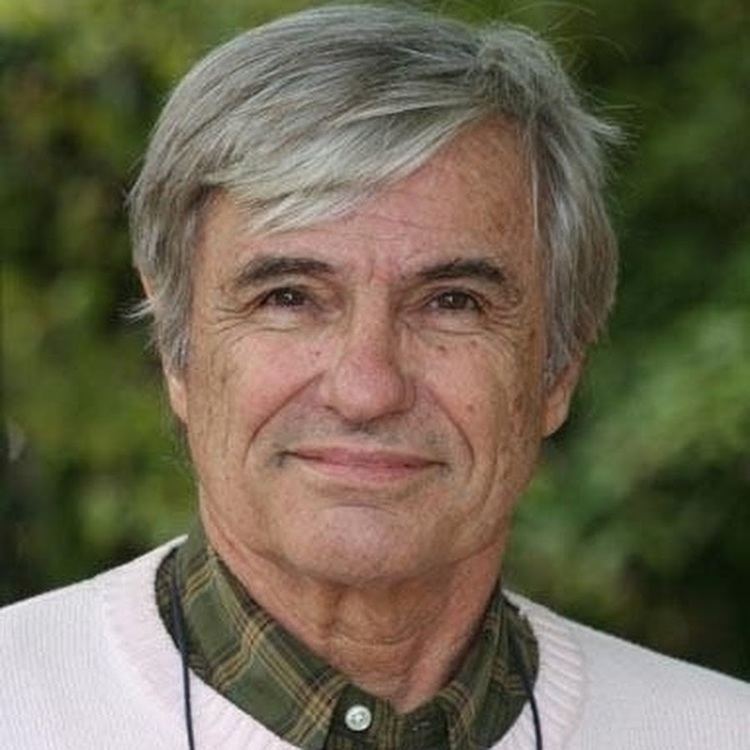
Jean-Pierre Petit is the founder of the "LAMBDA" laboratory (Laboratory for Applications of MHD in Bitemperature Discharges to Aerodynamics) and he co-founded the "Ufo-Science" non-profit organization dedicated to the study of the unidentified atmospheric phenomena or potential unidentified flying objects. He argues that a thorough scientific study of UFO phenomena (including cameras equipped with diffraction gratings) could potentially advance our scientific knowledge.
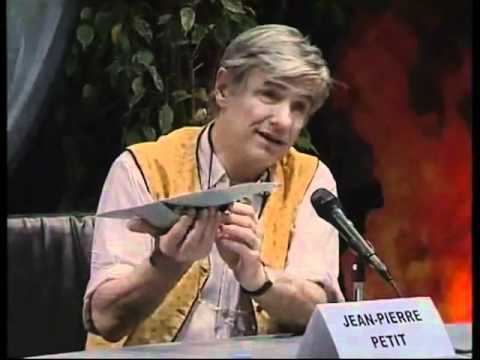
Jean-Pierre Petit also demonstrates a sustained interest in a wide variety of subjects not directly related to his work in cosmology, astrophysics and physics. In particular, on the UFO question, on the events of September 11, 2001, the UMMO case, the construction of pyramids, Aurora-type military technologies and French domestic policy issues.

Jean pierre petit about the secret american mhd technology
Professional work
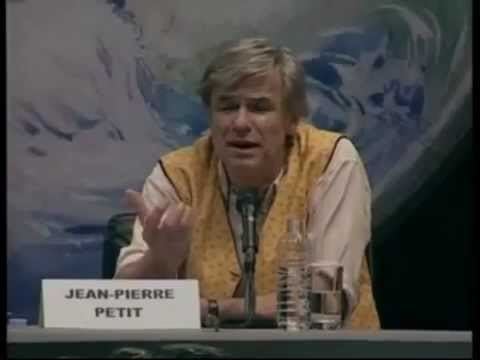
Jean-Pierre Petit obtains his Engineer's degree in 1961 at the French aeronautical engineering school ENSAE (Supaero). In the 1960s he works for several months in a French rocket engine test facility as a test engineer in the development of the first nuclear intercontinental missiles SLBM. Because he feels uncomfortable within the military R&D, he prefers to integrate civilian research. In 1965 he is hired by the Marseille Institute of Fluid Mechanics (IMFM), a French laboratory affiliated with CNRS and the French atomic agency CEA, as a research engineer where he makes his first studies in magnetohydrodynamics (MHD). In 1972 he fully incorporates the CNRS after his EngD thesis defense. In 1974 he officially stops experimental research in MHD and starts working at the Marseille Observatory where he reconverts himself in fundamental research as an astrophysicist. However, he personally carries on his experimental research on MHD propulsion until 1987. Convalescent after many months of hospitalization following an industrial injury, he becomes between 1977 and 1983 codirector of the Calculation Center at the French University of Provence where he develops with students some CAD software marketed in 1978. He retires from CNRS in April 2003 but keeps working. In 2007, he founds a non-profit organization called UFO-Science to concretize some research ideas he could not experiment on while working due to lack of allocated funds at the time.
Professional work overview in MHD
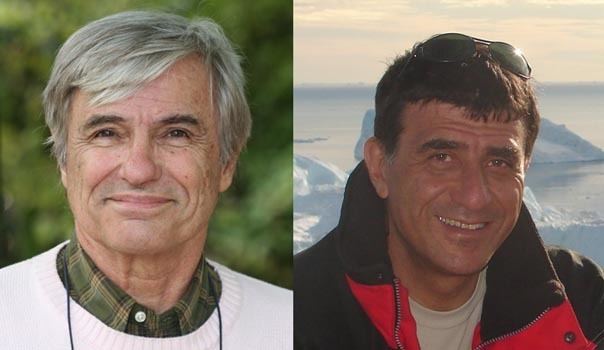
His career in the field of MHD is well-known: first method of electrothermal instability control and first usable MHD generator with non-equilibrium ionized gas (1967); kinetic theory of non-equilibrium plasmas (1972); MHD aerodynes with ionization control (1975); Shock wave cancellation by MHD force field around a cylindrical profile imbedded in a liquid flow (1983); 2nd method of electrothermal instability control by magnetic pressure gradient in an MHD accelerator (1981); Thesis director about shock wave annihilation around a flat wing in a hot supersonic gas flow: Resolution of Navier–Stokes equations within an MHD force field by the method of characteristics (1987).
Plasma physics and magnetohydrodynamics (MHD)
Petit is a pioneer in magnetohydrodynamics involving fluid mechanics, plasma physics and electromagnetism, in both MHD types:
MHD Power generation
He starts working in this field with shock tubes, acting as pulsed power MHD generators delivering several megawatts through direct conversion of supersonic hot gases into electricity, a device invented by Bert Zauderer and Jack Kerrebrock. In 1967, he presents the first experimental results of electrical power generation in a pulsed non-equilibrium high-Hall parameter MHD generator, producing two megawatts of electric power within a magnetic field of 2 teslas in a volume the size of a beer bottle, constituting the first step to cool down the gas in order to protect materials from heat, by controlling the electrothermal instability within MHD converters.
In 1972 he defends in front of Evry Schatzman his Doctor of Science thesis:
Coanda effect and air-breathing MHD accelerators
Petit studies at Supaero the first supersonic disc nozzle, which radially spits a very thin supersonic flat air jet from an annular convergent output along the surface of the device. Then the Coandă effect sucks the air flow along the bent wall, sucks down ambient air and creates a low pressure area on top of the device, inducing lift. This is how the Aerodina Lenticulara works, a device patented by Henri Coandă, whom Petit met in these days. He illustrates Coandă's disc experiments in a popular science review.
In 1975, he invents new MHD converters named MHD aerodynes and publishes the idea in a scientific journal. An MHD aerodyne is an aircraft concept with no moving part, where surrounding air is ionized (for example with microwaves), transformed into a cold plasma, then accelerated by electromagnetic fields around its external hull. It is thus an external flow MHD accelerator with ionization control (opposed to classical magnetoplasmadynamic thrusters where hot gases are electromagnetically accelerated internally, inside a rocket engine nozzle). In order to accommodate electromagnetic coils and the magnetic field lines they create in the air, the hull of MHD aerodynes must have symmetrical geometries (cylinder or sphere for example). A magnetic field as strong as possible is required to rise the acceleration efficiency. But high B-fields give a high Hall parameter β and it is well known in the engineering field of MHD power generation that high Hall effect MHD converters are preferably disk-shaped. It is the same thing with MHD accelerators, and high Hall effect MHD aerodynes must be disk-shaped, so the electric discharges in the plasma (streamers) can swirl freely around axis, for the Lorentz forces J×B to be centrifugal.
Thereby the discoidal MHD aerodyne is very similar to Coandă's Aerodina Lenticulara. Both use the Coandă effect to induce lift. The main difference is that the MHD aerodyne uses Lorentz forces to suck and propel air around the device, instead of using a mechanical propeller: it is an "electromagnetic Coanda disk". Admittedly the idea of discoidal aircraft with silent MHD propulsion had been suggested before, but it had never been published in academic journals nor experimented hitherto. However Leik Myrabo later popularized this idea in the USA with his microwave-powered Lightcraft project using an external flow-control MHD accelerator: Myrabo first talked about an "externally-excited-field MHD accelerator" in 1976, but has not experimented his annular "MHD Slipstream Accelerator" prototype at Rensselaer Polytechnic Institute before 1999.
MHD flow control and supersonic flight without shock wave
Petit calculates MHD forces, creating a partial vacuum area on front or on top of the device, would be powerful enough to evacuate incoming upstream molecules at supersonic speed before they accumulate at the stationary point, preventing the shock waves, thus controlling sound and heat barriers. MHD acceleration can indeed be very powerful, even more than chemical propulsion, because the acceleration efficiency grows like the magnetic field strength and is not limited by propellant's inertia as in chemical propulsion. For example, a pulsed small MHD accelerator can accelerate an ionized gas over 5,000 meters per second with only 10-centimeter electrodes and a moderate 2-tesla magnetic field, as shown at IMFM in 1970.
Petit obtains from 1975 to 1983 several positive experimental results with his MHD flow control devices:
He publishes these results in specialized journals and conferences.
In 1983 he summarizes his research about MHD propulsion and aerodynamic flow control in a scientific comic book titled The Silence Barrier where he popularizes these innovative concepts.
In 1987, the student engineer Bertrand Lebrun from the French Engineering institute ENSAM defends his Doctor of Engineering thesis under the direction of Jean-Pierre Petit. The subject is the mathematical calculation of shock wave cancellation around a flat wing in a supersonic gas flow, where they develop a method to solve the Navier–Stokes equations within an MHD force field by the method of characteristics. This work is presented at international MHD meetings, and published in peer-reviewed journals.
New research
In 2007 Petit creates UFO-Science, a non-profit organization devoted to scientific study of the UFO phenomenon. Electromagnetic plasma propulsion and supersonic flight without shock wave through flow control by MHD force field are studied in a new laboratory running with private funds, called LAMBDA λ (Laboratory for Applications of MHD in Bitemperature Discharges to Aerodynamics). He created this concept of "Citizen Research" because he claims the Establishment represented by official scientific public administration, such as the CNRS and the CNES, failed to concretize his ideas because of military strategic implications.
This laboratory publishes scientific result since 2008 with several publications in the scientific peer-reviewed journal Acta Physica Polonica and associated presentations in international MHD conferences: Vilnius in 2008, Bremen in 2009, Jeju, Korea in 2010, Prague in 2012, Warsaw and Princeton in 2013.
Galactic dynamics and Newtonian cosmology
In 1942, Subrahmanyan Chandrasekhar first attempted to describe stellar dynamics as self-gravitating non-collisional systems. In 1972, Petit extends this approach using more compact techniques inspired by the work done by Sydney Chapman and Thomas Cowling in the kinetic theory of gases. In this theory of galactic spiral structure, the Friedmann equations emerge from an elliptic solution of the Vlasov equation coupled with Poisson's equation.
He then publishes a rewriting of the Newtonian cosmology, resuming a work from 1934 by Arthur Milne and William McCrea, but from the point of view of his kinetic theory of non-equilibrium plasmas, which allows one to find the rotating universe model of Otto Heckmann and Engelbert Schücking.
Variable constants cosmology
In 1988, Petit introduces the idea of variable speed of light in cosmology, along with the joint variations of all physical constants combined to space and time scale factors changes, so that all equations and measurements of these constants remain unchanged through the evolution of the universe. The Einstein field equations remain invariant through convenient joint variations of c and G in Einstein's constant. The invariances requirement of Schrödinger and Maxwell's equations fulfill the set of gauge joint variations laws of the constants. The fine-structure constant becomes an absolute constant. Late-model restricts the variation of constants to the relativistic radiation-dominated era of the early universe, where spacetime is identified to space-entropy with a conformally flat metric.
Janus cosmological model
From 1977, Petit starts to build an atypical bimetric theory of gravity called the Janus cosmological model in reference to the two-faced god who "looks simultaneously to the future and to the past". Petit produces science comics and videos to popularize the various aspects of this cosmological model.
Previously known as the twin universe theory, it would explain various observational facts that the standard model cannot answer, the gravitational interaction of positive and negative masses being an alternative candidate for the explanation of dark matter, dark energy, cosmic inflation and the accelerating expansion of the universe. Despite being peer reviewed, this non-standard cosmological model has not triggered much interest in the scientific community throughout the years, except with mathematicians and geometers who seem more interested than cosmologists in its topological subtleties.
However, in particle physics, the theory shares similarities with the mirror matter of hidden sectors addressing CP violation. In general relativity, later independent work about bimetric gravity with positive and negative masses lead to the same conclusions regarding the laws of gravitation.
The Janus model has the same foundation as a model previously published by Andrei Sakharov ten years before. In 1967, Sakharov addressed the baryon asymmetry of the universe considering for the first time events in CPT symmetry occurring before the Big Bang:
Sakharov was the first scientist to introduce twin universes he called "sheets". He achieved a complete CPT symmetry since the second sheet is populated by invisible "shadow matter" which is antimatter (C-symmetry) because of an opposite CP-violation there, and the two sheets are mirror of each other both in space (P-symmetry) and time (T-symmetry) through the same initial gravitational singularity. He continued developing this idea for twenty years.
Ignoring the prior existence of this work translated in a book only fifteen years after its Russian publication, Petit publishes his first paper about two enantiomorphic universes with opposite arrows of time in 1977. Unlike Sakharov, he makes the two parallel universes interacting through gravity straightforward. In this first non-relativistic Newtonian dynamics model, galaxies are imbedded in repellent invisible negative mass, so they can be modeled as an exact solution of two Vlasov equations, coupled by Poisson's equation.
In 1994, the model is developed as a bimetric description of the universe. However this bimetry is not similar to independent work done in the field of classical bimetric gravity where the second metric refers to gravitons with nonzero mass. In the janus model, the bigravity is an extension of general relativity describing the universe as a Riemannian manifold associated to two conjugated metrics generating their own geodesics, solutions of two coupled Einstein field equations:
Petit's system of two coupled field equations reduces to Einstein's field equations in the case of a portion of spacetime where positive mass matter dominates and no negative mass is present, like in the Solar System. Similarly to this Einsteinian approximation, the Newtonian approximation allows to recover Newton's law of universal gravitation and formula for gravitational potentials from the field equations in the limit of weak fields and low velocities with respect to the speed of light.
The theory describes two parallel universes in CPT symmetry interacting through gravity, both originating from the same initial singularity. In the model, four types of matter coexist:
As positive mass matter emits positive energy photons travelling along null geodesics of the metric
The Newtonian approximation of the system of two coupled field equations provides the following gravitational interactions:
Those laws are different to the laws spelled out by Hermann Bondi and William Bonnor, and solve the runaway paradox, that usually makes scientists think negative mass can not physically exist:
Due to topological considerations, matter populating each fold appears to the other as having an opposite mass and an opposite arrow of time, although the proper time remains positive for both species.
In 1995, Petit combines his bimetric model with his VSL theory into the first paper summarizing the twin universes cosmology.
The main hypotheses stating that negative energy particles exist and result from time reversal, that two particles of opposite mass repel each other, and that physical constants can vary, are in opposition with the standard models of particle physics and cosmology. In quantum field theory, the T operator acting on Hilbert spaces is complex, and can be either linear and unitary, or antilinear and antiunitary; but is arbitrarily chosen antilinear and antiunitary in order to prevent inversion of energy, as the vacuum state of the Zero-point energy must have the lowest possible ground state and can not have negative values. But when this axiom was formulated, the accelerating expansion of the universe, which implies a negative pressure, was not known yet. As a pressure is a volumetric energy density, Petit thinks this problem should be reconsidered.
However, in group theory, the T operator is real and can reverse the energy. Dynamics of relativistic elementary particles is described by the Poincaré group. Currently physics uses the restricted Poincaré group, with only forward in time ("orthochronous") motions. As demonstrated by Jean-Marie Souriau using the complete Poincaré group, including backward in time ("antichronous") motions, arrow of time reversal equals mass inversion of a particle.
In the 2000s, Petit integrates Souriau's mathematical physics and fully geometrize his model with group theory.
In 2014 and 2015 he publishes a set of four papers detailing the most recent developments of the Janus model. The first paper produces an exact solution to the coupled field equations referring to the matter-dominated era which resolves the runaway paradox of negative mass and challenges dark energy to account for the accelerating expansion of the universe. In a second paper this is extended to two metrics with their own speed of light, followed by the Lagrangian derivation of the model. A fourth paper is devoted to the cancellation of the central singularity in the Schwarzschild solution, questioning the classical black hole model.
The model finally considers the possibility of apparent faster-than-light interstellar travel with limited energy. The mechanism would involve an artificial version of the black hole natural inversion mass process. The transferred vehicle would cruise along geodesics of the metric
Topology
In topology, Petit worked with Bernard Morin on the torus and sphere eversion. In the 1980s, he teaches sculpture at the art school of Aix-en-Provence, where he designs a 5-foot diameter model of Boy's surface which had been exposed in the π room of the Palais de la Découverte for 25 years. He publishes its first parametric representation, where meridians are described with ellipses. François Apéry used this representation to build the implicit equation of Boy's surface.
Egyptology
Coauthor of the article which sets out to demonstrate that the inscribed subdivisions which divide these ‘ceremonial’ cubits into submultiples of a finger, have the property of allowing this kind of instrument to serve as a graduated ruler. It is a multi-vernier technique. As Vernier invented this technique in 1631 and as such objects has been found since 2400 yrs BC it questions the level of mathematics level of the Ancient Empire.
Petit also expressed personal interest in the Egyptian pyramid construction techniques, proposing a solution based on a stone helicoid ramp using a recursion algorithm, and a technique mixing levers and ropes as a linear ratchet able to move heavy stone blocks. As recursion is a concept appearing in mathematics in the nineteenth century, it then again questions the science level of the ancient Egyptians. Petit presentes his theory at an exposition about pyramid construction techniques at the Palais de la Découverte, Paris in 2007.
Popular science
The general public have known of Petit from the 1970s, with his series of "scientific comic books" published in French as Les Aventures d'Anselme Lanturlu and in English as The Adventures of Archibald Higgins, depicting a young character who explains hard scientific concepts with easy popular meaning and simple analogies. Petit consequently created a non-profit organization named Savoir Sans Frontières (tr. Knowledge Without Borders) remunerating people all over the world for translation of these books into all available languages. These multilingual educational books are then freely available to download as PDF files from the organization's web site.
More specifically about his cosmological model, Petit published in 1998 a book in French, republished in 2001 in paperback. This short book is mainly a face to face between two hypotheses (a universe containing positive mass dark matter VS a universe with negative mass shadow matter). Petit wrote in 1999 a sequel in English containing the information of the first book, never published but available for free. As the model continues to evolve, Petit wrote in 2008 two science comics popularizing the various concepts of the model in astrophysics, cosmology and topology, and started as 2017 a video course series on YouTube, subtitled in English.
Claims and public matter of controversies
Petit is known to the general public through his popular science publications (books and comics) and by his appearances in French media, mostly about the UFO phenomenon. He is indeed favorable to the extraterrestrial hypothesis explaining some UFO cases, and the conspiracy theory about a cover-up from the armed forces to take a decisive technological, thus strategic advantage over other nations. He loudly denounces the tight relationship between the army and scientists since the Manhattan Project, which has created according to him a powerful military R&D leading to futuristic weapons of mass destruction and unmoral crowd and riot control technologies, to the exclusive use of the military-industrial complex. He also gives credit to 9/11 conspiracy theories through his web site. He thinks that global warming and geopolitics evolution caused by the unconsciousness of world political leaders will create fatal irrevocable disorders in the near future. According to him, becoming aware that we are not alone in the universe and that we are visited by people having a better technology than ours is the last chance for mankind. Such unconventional opinions has raised various enmities against him.
Ummo case and ufology
In the 1990s he publishes several books about ufology and the Ummo case, from which he would have studied documents since 1974. He claims to have found there useful inspiration for some of his work about MHD propulsion and cosmology. Thereafter those unidentified correspondents even sent mail to him for a while, where he would have again, according to him, found other starting points for additional research developments. His hierarchy does not welcome these books and after the publication of the third one, Petit is not able to publish any paper in peer-review journals during the rest of his career at CNRS.
American secret weapons
After an international conference on advanced propulsion, Petit writes a book, where he proclaims a leading edge science would have secretly emerged inside the US black projects sanctuaries, involving intensive study of aerial plasma propulsion with electromagnetic flow control. He suggests such an acceleration of these technological programs would have been undertaken after military forces of the United States would have the proof of existence of intelligent extraterrestrial life forms visiting Earth in the 1940s, in particular with the so-called Roswell UFO crash which he thinks was real.
Using his knowledge about plasma physics and magnetohydrodynamics, Petit describes a model of hypersonic airplane working with an MHD bypass system, claiming it would correspond to the mythic Aurora secret spyplane US Air Force would have brought into service in the 1990s. He gave several lectures on this subject, especially at the French aeronautical engineering school ENSAE where his object lesson was not criticized. Conversely, detractors of this idea never provided any technical argument in support of their denials.
Petit also envisages that the U.S. Army would have accidentally discovered how to generate antimatter through superdense states of matter by the use of magnetically focused underground thermonuclear explosions of several megatons. Some antimatter bombs would have been created, but too powerful to be tested on Earth they would have been camouflaged into what was known as the comet Shoemaker–Levy 9, then detonated on Jupiter. Most of his colleagues judge this story as overly fanciful.
Aneutronic fusion energy vs pure fusion bombs
After the breakthrough made by Sandia National Laboratories at the end of 2005 where researchers generated more than 3 billion degrees within the MHD compressor Z machine, he tries to draw the attention of scientists, politicians, ecologists and the public to what he presents as a possible future clean nuclear civilian energy, thanks to aneutronic nuclear fusion reactions with none or very few radioactive waste byproducts. But again this technology is potentially proliferating and Petit claims it could also lead to new pure fusion weapons, where the central fission A-bomb used classically for ignition of the H-bomb would be useless, replaced by a fast electric pulsed power detonator (a compact z-pinch fed with some explosively pumped flux compression generator).
